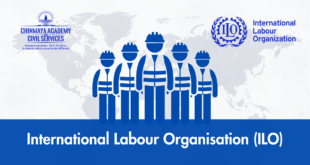If Southeast Asia is the heart of the Indo-Pacific, the 56th Foreign Ministers Meeting (FMM) of the Association of Southeast Asian Nations (ASEAN), the post-ministerial conferences and other related regional meetings, held in Jakarta, Indonesia in mid-July, 2023, are the best barometer to check on the region’s latest dynamics. An elaborate institutional architecture created by ASEAN has become an inclusive platform that draws nations from near and far, as also all major players (the United States, China, India, Japan and Russia) engaged in shaping the strategic contestation in a vast region stretching from east Africa to the South Pacific.
India’s Role
India at the post-ministerial conference and other regional dialogues, instead of accompanying the Prime Minister on his visits to France and the United Arab Emirates earlier in July. Referred to the importance of a “strong and unified” ASEAN in the emerging dynamic of the Indo-Pacific, and highlighted the convergence between the AOIP and India’s Indo-Pacific Oceans Initiative. To build on the comprehensive strategic partnership between India and ASEAN, he suggested that the two sides work in “newer areas such as cyber, financial and maritime security domains.
Though it appeared that ASEAN did not make much progress, and no new ground was broken, its persistence with dialogue, internally and externally, prevents geopolitical temperatures from rising. The next ASEAN summit will be held in Jakarta in September 2023. Hopefully, this will bring greater clarity on the way to tackle challenges confronting the region.
ASEAN
ASEAN stands for the Association of Southeast Asian Nations. It is a political and economic union of 10 member states in Southeast Asia. The member states are:
- Brunei Darussalam
- Cambodia
- Indonesia
- Laos
- Malaysia
- Myanmar
- Philippines
- Singapore
- Thailand
- Vietnam
ASEAN was founded on 8 August 1967 in Bangkok, Thailand. The main goals of ASEAN are to promote economic growth, social progress, and cultural development in the region. ASEAN also seeks to maintain peace and stability in Southeast Asia.
ASEAN has been successful in promoting economic growth in the region. The ASEAN Economic Community (AEC) was established in 2015 with the goal of creating a single market and production base for goods and services in Southeast Asia. The AEC has helped to boost trade and investment in the region.
ASEAN has also been active in promoting social progress and cultural development in the region. The ASEAN Socio-Cultural Community (ASCC) was established in 2003 with the goal of promoting human rights, education, and environmental protection in Southeast Asia. The ASCC has helped to improve the lives of people in the region.
ASEAN is a major player in the global economy. The combined GDP of ASEAN is over US$3 trillion, making it the seventh largest economy in the world. ASEAN is also a major trading bloc, with a total trade volume of over US$3 trillion.
ASEAN is committed to maintaining peace and stability in Southeast Asia. The ASEAN Regional Forum (ARF) was established in 1994 to promote dialogue and cooperation among the countries in the region. The ARF has helped to reduce tensions in Southeast Asia and has played a role in resolving some of the region’s conflicts.
ASEAN is a dynamic and growing organization. It is playing an increasingly important role in the global economy and in regional affairs.
 Chinmaya IAS Academy – Current Affairs Chinmaya IAS Academy – Current Affairs
Chinmaya IAS Academy – Current Affairs Chinmaya IAS Academy – Current Affairs



